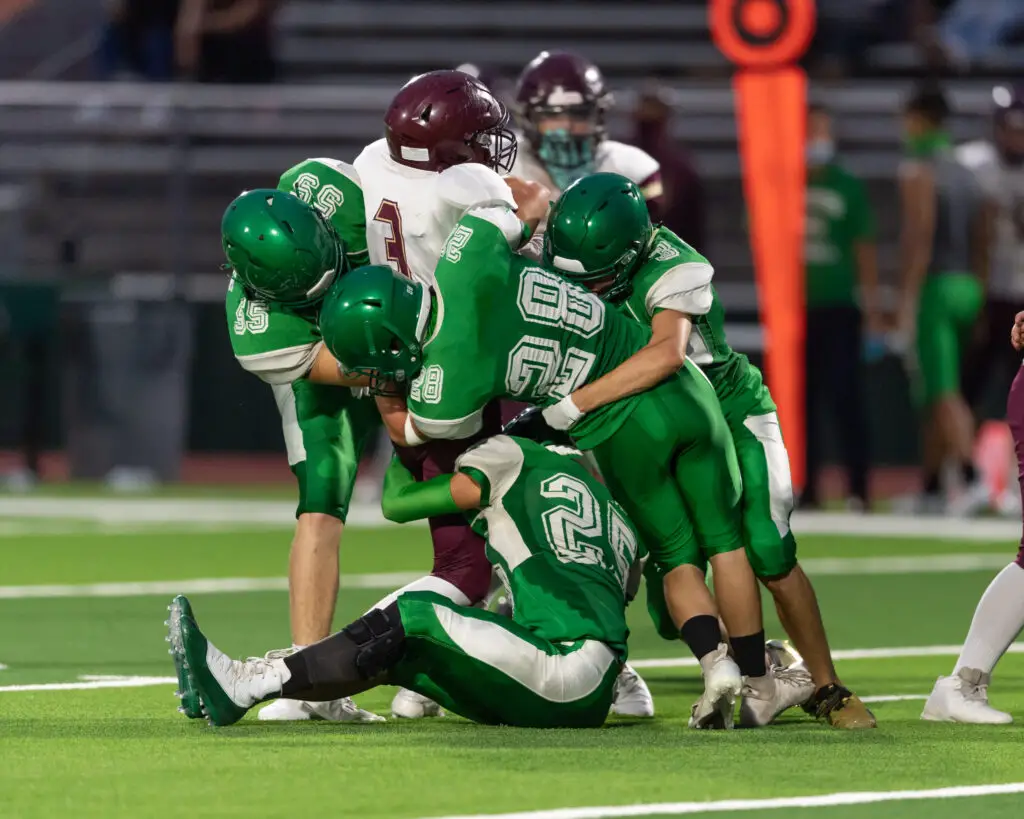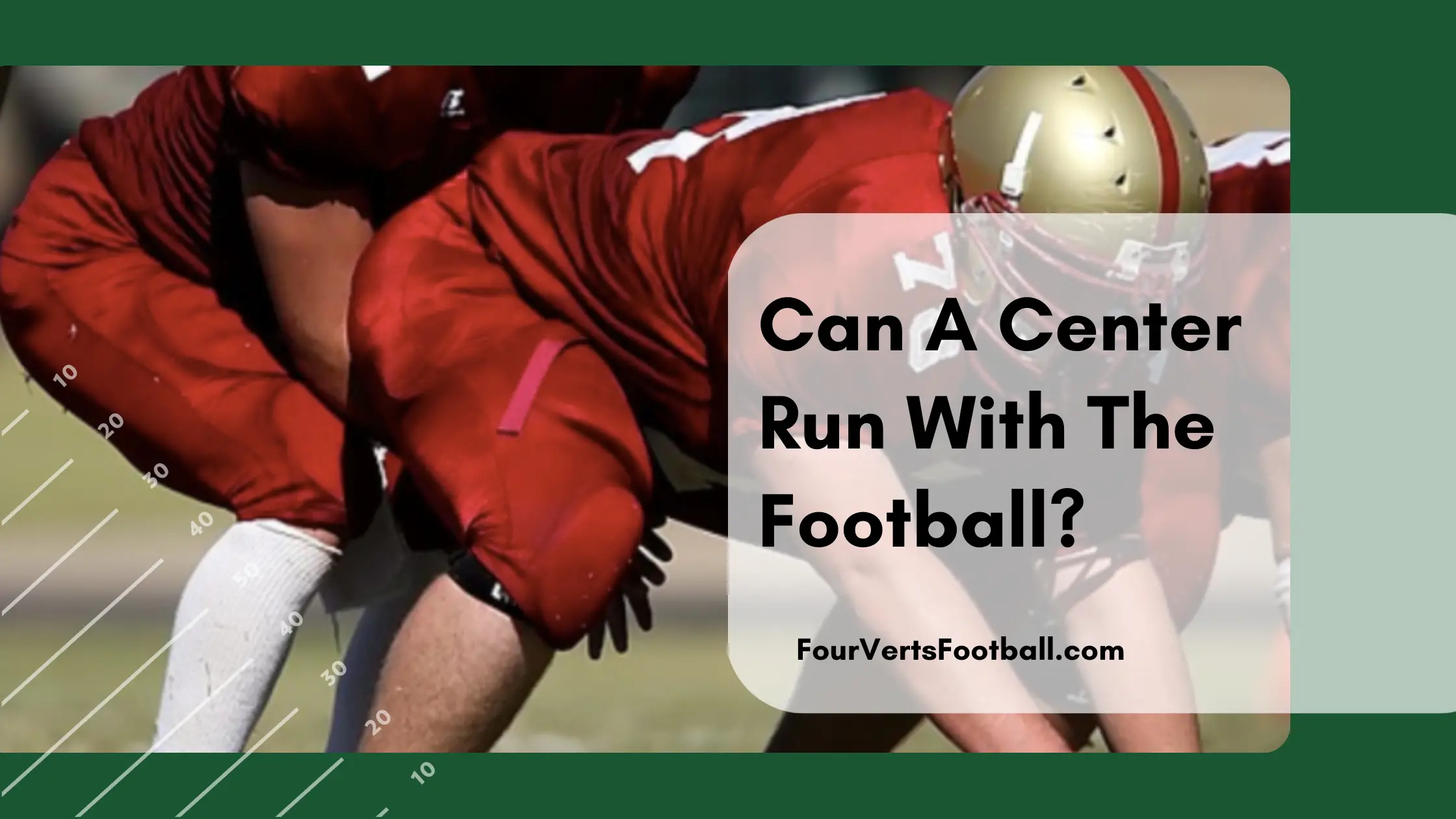Football is a game of inches and if you watch football often you’ll know inches will often be the difference between a first down and a punt. On these plays, many fans wonder whether or not a center can run with the ball and pick up the first down?
A center cannot run with the ball in football. If the center does not snap the ball to another player an illegal snap infraction penalty will be assessed and the play will be blown dead.
Here is what the nfl rulebook has to say about a center running the ball to start a play.
Article 3: Restrictions for Snapper. The snap (3-31) may be made by any offensive player who is on the line of scrimmage but must conform to the following provisions:
(b) It is not necessary that the snap be between the snapper’s legs, but it must be one quick and continuous motion of the hand or hands of the snapper. The ball must leave or be taken from his hands during this motion.
The most important section of this rule states that the ball must leave or be taken from the center’s hands during the snap. Essentially if the center snaps the ball and it does not leave his hands he will be given an illegal snap infraction penalty.
This penalty is five yards and does not have any effect on the down.
Can A Center Catch A Pass In Football?
Now that we know a center is not allowed to run the ball to start a play let’s go over some other ways they can get their hands on the ball. Catching a pass is not common for an offensive lineman. But in recent years some teams have had success getting lineman the ball in the endzone.
The biggest hurdle to overcome when making a pass to a lineman is to ensure he is an eligible receiver.
Eligible receiver
On any given play for a player to be an eligible receiver he must be on either end of the line. Or be at least one yard behind the line of scrimmage.
This means you must be the furthest left or furthest right player lining up on the line of scrimmage. Otherwise you will have to lineup one yard before the line of scrimmage. This is why you see slot receivers and tight ends often line up off the line.
Now if you are a player numbered fifty to seventy nine you are going to have let the referee know you are eligible.
These nubmers were selected because they are often worn by offensive lineman. If no player outside of you is on the line of scrimmage an offensive lineman can be an eligible receiver.
But you must announce that this player is eligible to the referee prior to the play starting.
Unfortunately, since the center is in the middle of the formation there is no way he can be considered an eligible receiver.
If a center ran down the field to catch a pass the offense would receive an inelligble receiver downfield penalty. This infraction carries a penalty of five yards and would require a repeat of the down.
For an offensive lineman to receive this penalty he must be three yards past the line of scrimmage before the pass is thrown.
Tipped Balls
A tipped ball is one of the few situations in which a center can advance the football. If a defensive player tips a pass the ball is able to be caught by any player on the field. Even though the center is not an eligible receiver he is still able to catch a tipped pass.

If the center is able to catch this pass he is able to advance the ball like any other player. This of course is not something you can game plan for. This is because you need a defender to tip the ball in the center’s area.
Loose Ball
A bobbled snap, fumbled ball, or dropped lateral can all lead to a live ball in the backfield. Since these plays result in a live ball. The center is able to pick this ball up and progress it like any other player.
This is the most likely scenario which would allow a center to gain some yards with the ball in their hands.
An interesting anecdote regarding offensive linemen recovering fumbles is that they are not able to progress the ball in the final two minutes of the game.
If a player on the offense fumbles in the final two minutes only that player can recover and advance the ball down the field.
Teammates of the player who fumbled are able to gain possession of the ball but they will be marked down at the location in which the player fumbled.
Kick Returns
A kick return is the only other scenario in which you may see an offensive lineman with a ball in their hands. On the kick return, team offensive linemen are sometimes used to block tacklers from reaching the kick returner.
But on some occasions, a team may try a squib kick which involves kicking the ball a much shorter distance.
This can result in an offensive lineman being the closest player to the ball. When this happens on a kickoff you need to go for it because at this point it is a live ball. A live ball means that either team can grab the ball to gain possession.
Oftentimes lineman will simply jump on a loose ball in a situation like this. But on some occasions, they may catch the ball and start a return. Some linemen have even gone as far as to break a few tackles a returned the ball over fifty yards.

